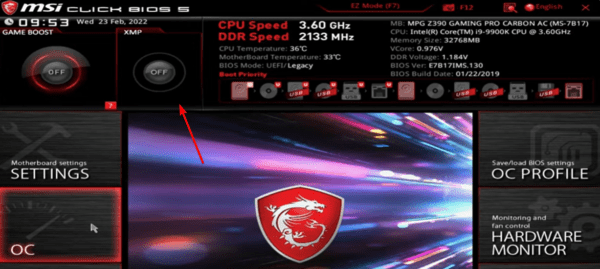Some Windows 11 users have observed that the RAM speed displayed on their devices is wrong. This can be a problem because the wrong RAM speed can cause reduced performance, instability and crashes, data corruption, or even hardware damage.
You may view your RAM speed from the Task Manager or by running the wmic memorychip get speed script on your command prompt. If the speeds displayed on different utilities do not match, there is a problem, and you should follow the solutions in this guide.
You may learn more about our guide to checking RAM specs and speed on Windows 11.
Why Do I Have a RAM Speed Mismatch on Windows 11?
First, let us state that a mismatched RAM speed is not always a bad thing. In fact, in most cases, it is normal and can be ignored.
The varying speed may be due to Double Data Rate. Here, you may check the RAM speed on the Task Manager and get a value of 3200, while when you check on the Command Prompt, you get 1600. The WMIC measures the actual RAM speed, while you see the maximum speed capacity on the Task Manager.
It may also mean you are enabling XMP or DOCP. Both technologies allow you to overclock the RAM beyond its default speed.
On the other hand, it may be because of any of the following that may be a bit concerning:
- Mismatched RAM modules. This may lead to defaulting to the lowest speed for compatibility reasons.
- Incorrect BIOS settings, especially if you manually configure, voltage or timing settings.
- Incorrect RAM installation.
- Hardware limitations of your motherboard or CPU.
1. Check RAM Speed From BIOS
The BIOS RAM speed display is often the most accurate option you should go by. The specific steps will depend on the manufacturer, but generally, you may follow the steps below.
Step 1: Restart your computer, and before it comes on, tap on F10 or the appropriate BIOS key for your manufacturer.
Step 2: Navigate to Advanced in BIOS.
Step 3: Locate the Memory Frequency and view your correct RAM speed.
2. Turn on Your XMP Profile
The XMP (eXtreme Memory Profile) feature of computer memory modules makes it easy to overclock and maximize RAM performance. You may enable XMP profiles in the BIOS to use predetermined memory settings and enhance RAM performance without requiring manual modifications.
Once again, the exact steps will depend on your computer brand, but generally, the steps will be similar to those described below.
Step 1: Restart your computer, and before it comes on, tap on F10 or the appropriate BIOS key for your manufacturer.
Step 2: Click the XMP off button to enable it.

Step 3: Optionally, click OC on the left pane, click DRAM frequency and select a frequency that matches what is on your Command Prompt.

3. Replace the RAM
If the problem persists, this may be a sign of RAM failure, in which case, your best bet will be to replace your RAM. If you have multiple RAM seats, buy the same RAM aspects to fill them. Also, make sure you buy a RAM compatible with your motherboard.
FAQ
1. Why is my RAM speed not correct?
Mismatched RAM modules and XMP or DOCP not enabled are the most common reasons.
2. Why is my 3200MHz RAM showing as 2133?
This is also mainly because your XMP has been disabled; in a few cases, it may result from Double Data Rate.
Wrong RAM Speed Fixed on Windows 11
That is all you need to know about writing RAM on Windows 11. Sometimes, it is normal and not a problem; however, when needed, you will find helpful solutions in this comprehensive guide.

